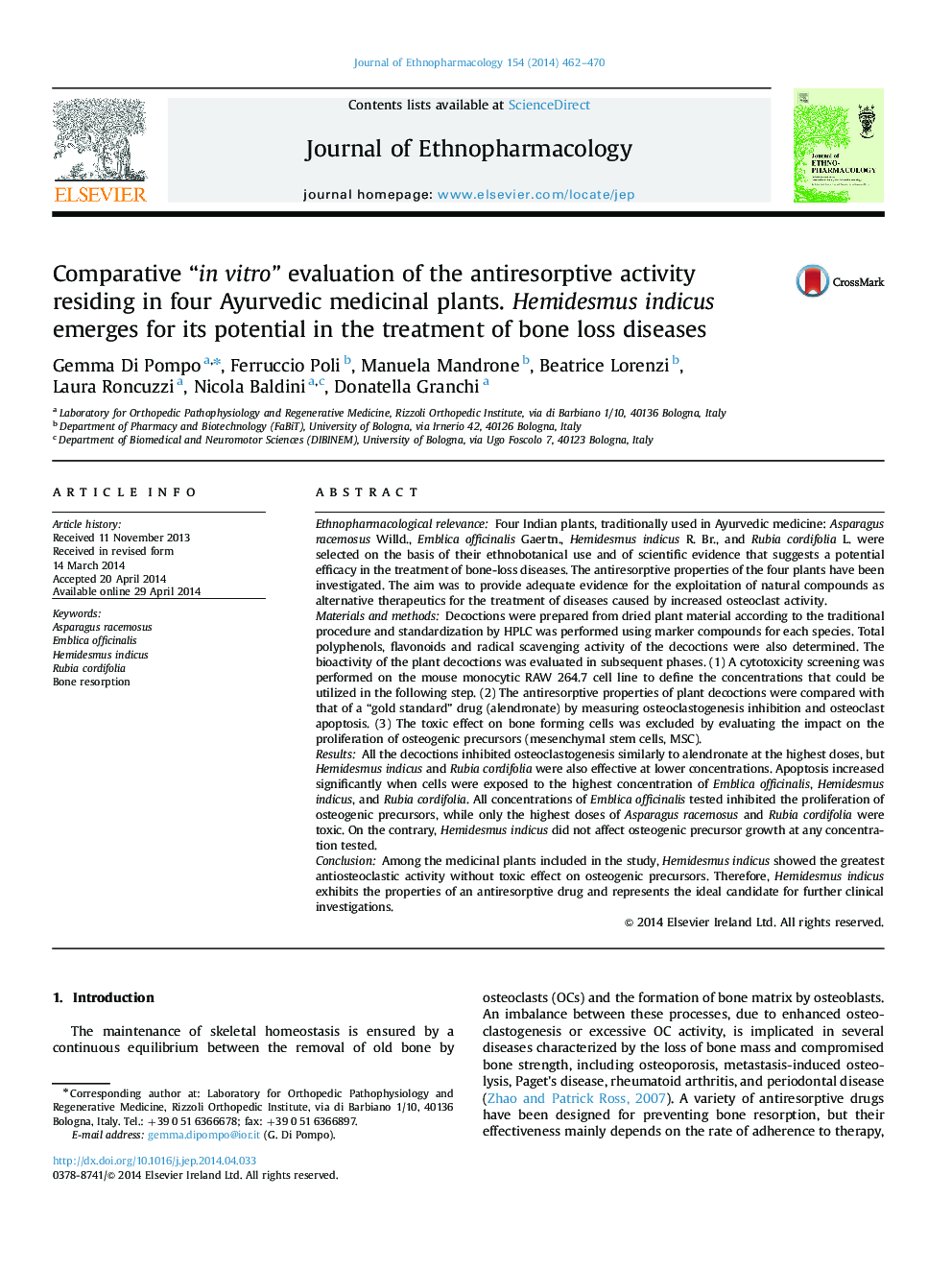| Article ID | Journal | Published Year | Pages | File Type |
|---|---|---|---|---|
| 2545151 | Journal of Ethnopharmacology | 2014 | 9 Pages |
Ethnopharmacological relevanceFour Indian plants, traditionally used in Ayurvedic medicine: Asparagus racemosus Willd., Emblica officinalis Gaertn., Hemidesmus indicus R. Br., and Rubia cordifolia L. were selected on the basis of their ethnobotanical use and of scientific evidence that suggests a potential efficacy in the treatment of bone-loss diseases. The antiresorptive properties of the four plants have been investigated. The aim was to provide adequate evidence for the exploitation of natural compounds as alternative therapeutics for the treatment of diseases caused by increased osteoclast activity.Materials and methodsDecoctions were prepared from dried plant material according to the traditional procedure and standardization by HPLC was performed using marker compounds for each species. Total polyphenols, flavonoids and radical scavenging activity of the decoctions were also determined. The bioactivity of the plant decoctions was evaluated in subsequent phases. (1) A cytotoxicity screening was performed on the mouse monocytic RAW 264.7 cell line to define the concentrations that could be utilized in the following step. (2) The antiresorptive properties of plant decoctions were compared with that of a “gold standard” drug (alendronate) by measuring osteoclastogenesis inhibition and osteoclast apoptosis. (3) The toxic effect on bone forming cells was excluded by evaluating the impact on the proliferation of osteogenic precursors (mesenchymal stem cells, MSC).ResultsAll the decoctions inhibited osteoclastogenesis similarly to alendronate at the highest doses, but Hemidesmus indicus and Rubia cordifolia were also effective at lower concentrations. Apoptosis increased significantly when cells were exposed to the highest concentration of Emblica officinalis, Hemidesmus indicus, and Rubia cordifolia. All concentrations of Emblica officinalis tested inhibited the proliferation of osteogenic precursors, while only the highest doses of Asparagus racemosus and Rubia cordifolia were toxic. On the contrary, Hemidesmus indicus did not affect osteogenic precursor growth at any concentration tested.ConclusionAmong the medicinal plants included in the study, Hemidesmus indicus showed the greatest antiosteoclastic activity without toxic effect on osteogenic precursors. Therefore, Hemidesmus indicus exhibits the properties of an antiresorptive drug and represents the ideal candidate for further clinical investigations.
Graphical abstractFigure optionsDownload full-size imageDownload high-quality image (253 K)Download as PowerPoint slide
